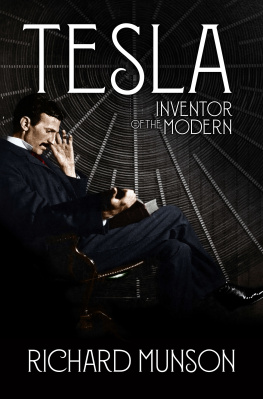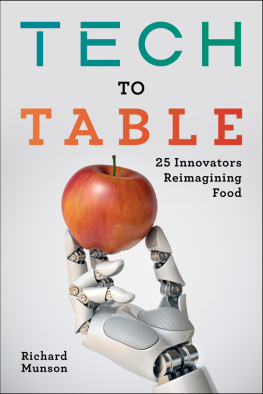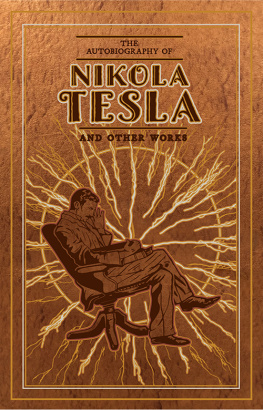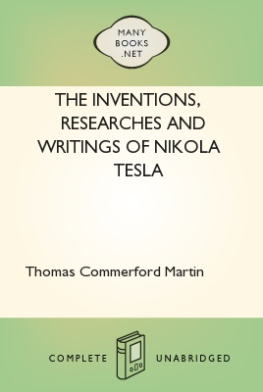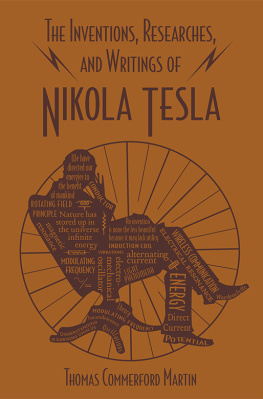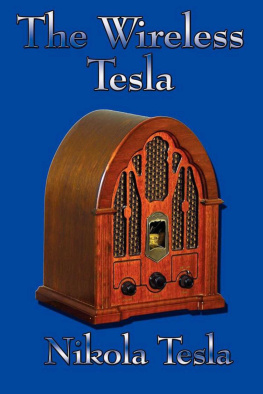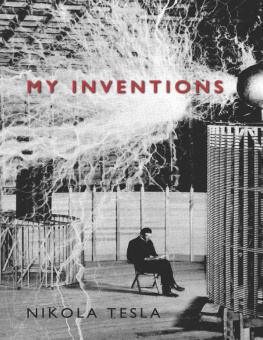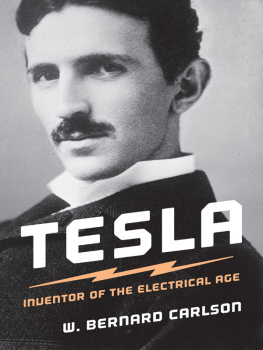Richard Munson - Tesla: Inventor of the Modern
Here you can read online Richard Munson - Tesla: Inventor of the Modern full text of the book (entire story) in english for free. Download pdf and epub, get meaning, cover and reviews about this ebook. year: 2018, publisher: W. W. Norton & Company, genre: Non-fiction. Description of the work, (preface) as well as reviews are available. Best literature library LitArk.com created for fans of good reading and offers a wide selection of genres:
Romance novel
Science fiction
Adventure
Detective
Science
History
Home and family
Prose
Art
Politics
Computer
Non-fiction
Religion
Business
Children
Humor
Choose a favorite category and find really read worthwhile books. Enjoy immersion in the world of imagination, feel the emotions of the characters or learn something new for yourself, make an fascinating discovery.
- Book:Tesla: Inventor of the Modern
- Author:
- Publisher:W. W. Norton & Company
- Genre:
- Year:2018
- Rating:3 / 5
- Favourites:Add to favourites
- Your mark:
Tesla: Inventor of the Modern: summary, description and annotation
We offer to read an annotation, description, summary or preface (depends on what the author of the book "Tesla: Inventor of the Modern" wrote himself). If you haven't found the necessary information about the book — write in the comments, we will try to find it.
Teslas inventions transformed our world, and his visions have continued to inspire great minds for generations.
Nikola Tesla invented the radio, robots, and remote control. His electric induction motors run our appliances and factories, yet he has been largely overlooked by history. In Tesla, Richard Munson presents a comprehensive portrait of this farsighted and underappreciated mastermind.
When his first breakthroughalternating current, the basis of the electric gridpitted him against Thomas Edisons direct-current empire, Teslas superior technology prevailed. Unfortunately, he had little business sense and could not capitalize on this success. His most advanced ideas went unrecognized for decades: forty years in the case of the radio patent, longer still for his ideas on laser beam technology. Although penniless during his later years, he never stopped imagining. In the early 1900s, he designed plans for cell phones, the Internet, death-ray weapons, and interstellar communications. His ideas have lived on to shape the modern economy.
Who was this genius? Drawing on letters, technical notebooks, and other primary sources, Munson pieces together the magnificently bizarre personal life and mental habits of the enigmatic inventor. Born during a lightning storm at midnight, Tesla died alone in a New York City hotel. He was an acute germaphobe who never shook hands and required nine napkins when he sat down to dinner. Strikingly handsome and impeccably dressed, he spoke eight languages and could recite entire books from memory. Yet Teslas most famous inventions were not the product of fastidiousness or linear thought but of a mind fueled by both the humanities and sciences: he conceived the induction motor while walking through a park and reciting Goethes Faust.
Tesla worked tirelessly to offer electric power to the world, to introduce automatons that would reduce lifes drudgery, and to develop machines that might one day abolish war. His story is a reminder that technology can transcend the marketplace and that profit is not the only motivation for invention. This clear, authoritative, and highly readable biography takes account of all phases of Teslas remarkable life.
8 pages of illustrationsRichard Munson: author's other books
Who wrote Tesla: Inventor of the Modern? Find out the surname, the name of the author of the book and a list of all author's works by series.

